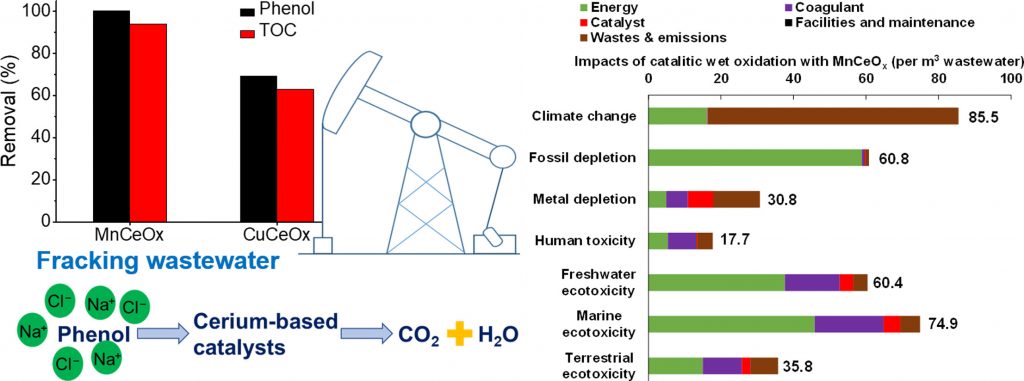
Fracking is a controversial technique that involves injecting water, sand and chemicals into shale rock to extract natural gas. One of the main challenges of fracking is how to treat the wastewater that is generated, which contains high concentrations of salt and organic pollutants. A new study conducted by the University of Manchester explored the use of cerium-based mixed oxide catalysts for catalytic wet oxidation (CWO) of organic compounds in fracking wastewater. CWO is a process that uses oxygen and high temperature and pressure to break down organic molecules. The researchers found that one of the catalysts, MnCeOx, was very effective in removing phenol and total organic carbon from both synthetic and real fracking wastewater, with minimal metal leaching. The study also assessed the life cycle environmental impacts of the catalyst production and CWO process, and compared them with ozonation, another treatment method. The results showed that CWO caused lower environmental impacts, including climate change, toxicity and ecotoxicity impacts, compared to ozonation due to its significantly lower energy consumption. The study concluded that CWO with MnCeOx catalysts could be a promising technology for fracking wastewater treatment, improving both the efficiency and the sustainability of the fracking process.
Read the full paper at https://doi.org/10.1016/j.scitotenv.2022.160480




